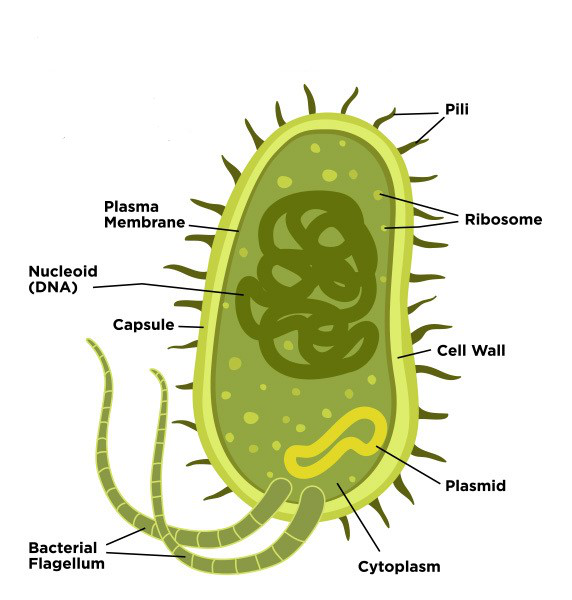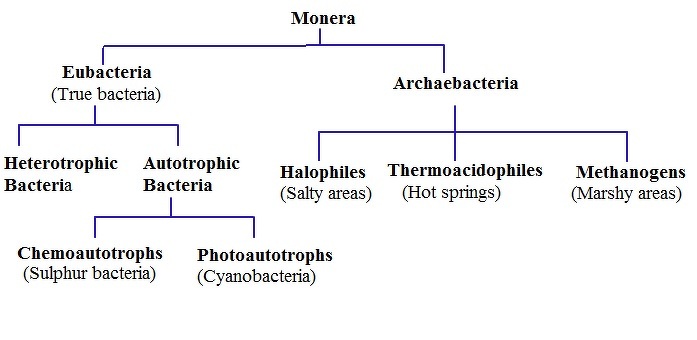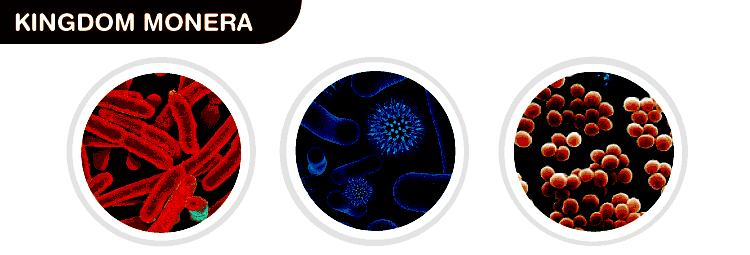In the vast world of biology, Kingdom Monera holds a significant place. This kingdom comprises a diverse group of organisms known as prokaryotes. Prokaryotes are single-celled organisms that lack a true nucleus and membrane-bound organelles. They are the oldest known microorganisms on Earth and have a wide range of characteristics and classifications.
What is Kingdom Monera?
Kingdom Monera is a taxonomic classification that includes prokaryotic organisms. Prokaryotes are unicellular organisms that lack a true nucleus, which means their DNA is not enclosed within a membrane-bound nucleus. Monerans are typically found in moist environments such as hot springs, deep oceans, and as parasites in other organisms. They play a crucial role in various ecological processes and have both beneficial and harmful effects on other organisms.

Characteristics of Monera
The organisms belonging to Kingdom Monera possess several distinct characteristics. They are unicellular organisms, meaning they are made up of a single cell. Monerans have a rigid cell wall made up of peptidoglycan, a substance unique to bacteria. They lack membrane-bound organelles such as mitochondria, lysosomes, plastids, Golgi bodies, and endoplasmic reticulum. Monerans reproduce asexually by binary fission or budding. They also exhibit different modes of nutrition, including autotrophic, heterotrophic, parasitic, and saprophytic.
Bacteria: A Member of Monera
One of the most well-known groups within Kingdom Monera is bacteria. Bacteria are microscopic organisms that can survive in diverse environments. They have a simple cellular structure without a nucleus and possess a few cell organelles. Bacteria are surrounded by a protective cell wall and may have additional features such as capsules, flagella, and pili. They exhibit both autotrophic and heterotrophic modes of nutrition, deriving energy from inorganic substances or external organic materials. Bacteria play a vital role in various ecological processes and have both beneficial and harmful effects on other organisms.
Classification of Monera
Kingdom Monera is classified into three sub-kingdoms: Archaebacteria, Eubacteria, and Cyanobacteria.
Archaebacteria
Archaebacteria are the most ancient bacteria, often found in extreme habitats such as hot springs, salty areas, and marshy environments. These organisms have unique cell wall structures that enable them to survive in extreme conditions. Archaebacteria exhibit autotrophic mode of nutrition and have distinct nucleotide sequences in their t-RNA and r-RNA. Examples of archaebacteria include methanogens, halophiles, and thermoacidophiles.
Eubacteria
Eubacteria, also known as true bacteria, are a diverse group of prokaryotes. They have a rigid cell wall made up of peptidoglycans and can be found in various environments. Eubacteria can be classified into gram-positive and gram-negative bacteria based on the nature of their cell wall and the stain they take. They exhibit various modes of nutrition and have important ecological roles. Examples of eubacteria include Rhizobium and Clostridium.
Cyanobacteria
Cyanobacteria, also known as blue-green algae, are photosynthetic bacteria. They contain chlorophyll, carotenoids, and phycobilins, which enable them to carry out photosynthesis. Cyanobacteria are primarily found in aquatic environments and play a significant role in oxygen production through photosynthesis. Some cyanobacteria can also fix atmospheric nitrogen. Examples of cyanobacteria include Nostoc, Anabaena, and Spirulina.

Bacterial Shape
Bacteria come in various shapes and sizes. Some common shapes include cocci (spherical or oval), bacilli (rod-shaped), vibrios (comma or kidney-shaped), spirillum (spiral or coiled-shaped), filament (consisting of small filaments), stalked (possessing a stalk), and budded (swollen at places). The shape of bacteria can provide valuable information for their identification and classification.
Structure of Bacteria
Bacteria have a unique cellular structure that allows them to survive and thrive in various environments. The structure of a typical bacterial cell includes a capsule (a slimy protective layer), a cell wall (providing rigidity), a plasma membrane (selectively permeable), cytoplasm (containing various cellular components), nucleoid (region containing DNA), plasmids (small circular DNA molecules), flagella (providing motility), pili or fimbriae (hair-like appendages), and ribosomes (involved in protein synthesis). These structures contribute to the overall functionality and adaptability of bacteria.

Nutrition in Bacteria
Bacteria exhibit diverse modes of nutrition depending on their environment and metabolic capabilities. Autotrophic bacteria can synthesize their own food from inorganic substances, while heterotrophic bacteria rely on external organic materials for nutrition. Autotrophic bacteria can be further categorized into those that derive energy from sunlight (photosynthetic) and those that derive energy from inorganic chemicals (chemosynthetic). Heterotrophic bacteria can be decomposers, parasites, or symbionts, playing important roles in nutrient cycling and ecosystem functioning.
Difference Between the Kingdoms Monera and Protista
The kingdoms Monera and Protista both belong to the domain of prokaryotes, but they differ in significant ways. Monera consists of prokaryotes that lack a nucleus and have a simpler cellular structure, while Protista includes eukaryotes that have a true nucleus and more complex cellular organization. Monera is mainly composed of bacteria, while Protista encompasses a wide range of unicellular eukaryotic organisms, including algae, protozoa, and slime molds. Additionally, Monera exhibits prokaryotic modes of nutrition, reproduction, and cellular organization, while Protista exhibits eukaryotic characteristics.
Solved Examples on Kingdom Monera
Here are a few examples that illustrate concepts related to Kingdom Monera:
Example 1: Identify the shape of bacteria with a spiral or coiled structure.
Solution: The bacteria with a spiral or coiled structure are called spirillum. They are rigid due to their spiral shape and possess flagella at one or both ends.
Example 2: Differentiate between autotrophic and heterotrophic bacteria.
Solution: Autotrophic bacteria are capable of synthesizing their own food from inorganic substances, while heterotrophic bacteria rely on external organic materials for nutrition. Autotrophic bacteria can derive energy from sunlight or inorganic chemicals, while heterotrophic bacteria can be decomposers, parasites, or symbionts.
Example 3: Name one type of bacteria that can tolerate extreme environments such as high temperatures or highly salty areas.
Solution: Halophiles are a type of bacteria that can tolerate highly salty environments. They are often found in areas such as salt marshes or salt flats.
How Kunduz Can Help You Learn Kingdom Monera?
Kunduz is dedicated to providing comprehensive learning resources, including articles, videos, and interactive exercises, to help you master the concepts of Kingdom Monera. Our user-friendly platform offers a wide range of educational materials designed to cater to different learning styles and preferences. With Kunduz, you can access high-quality content anytime, anywhere, and enhance your understanding of Kingdom Monera in an engaging and effective manner.
